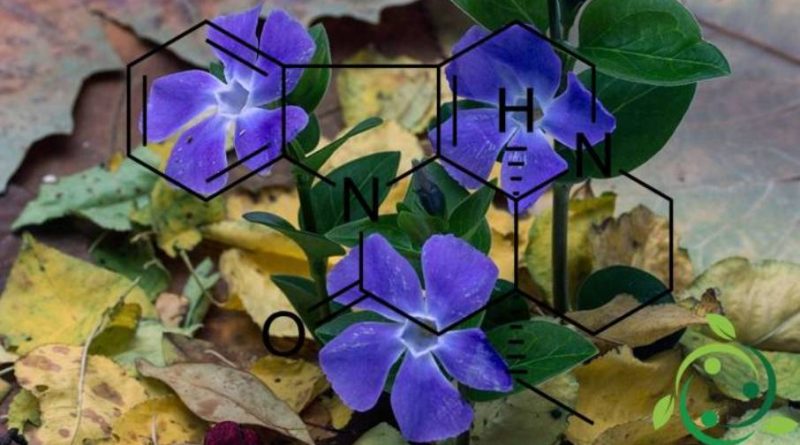Vinburnin
Vinburnin
Vinburnin is a semi-synthetic molecule derived from the acid hydrolysis of vincamine, the main alkaloid of small periwinkle (Vinca minor).
Following experiments conducted on animals and clinical studies on humans, it appears that vinburnin has multiple activities.
Vinburnin improves the blood’s ability to transport oxygen to tissues, most likely with some mechanisms of action:
– increases the partial pressure of the oxygen by 10-15% without modifying the ventilating parameters and increasing in this way the exchanges at alveolus-capillary level;
– at the erythrocyte level it increases energy production (ATP) by improving the deformability of the erythrocytes and stimulates the intra-erythrocyte 2,3-diphosphoglycerate system increasing the dissociation of the oxyhemoglobin;
– at circulatory level it improves blood rheology and reduces the process of platelet aggregation.
This molecule also acts on neuronal metabolism by increasing aerobic glycolysis, as demonstrated by the increase in arterio-venous oxygen difference and the decrease in lactate / pyruvate ratio.
It would also favor the redistribution of blood flow to the ischemic areas.
Vinburnin phosphate with the same criteria as vinburnin is also used in the therapies.
Vinburnin is also proposed to improve, in the event of insufficiency, the cerebral circulation and to obtain the improvement of the symptomatology due to pathological intellectual deficit in the elderly subject.
In ophthalmology it is used in retinal disorders of vascular origin such as maculopathies, venous or arterial obliteration syndromes and traumatic chorioretinopathies. Vinburnin is also used in the treatment of cocleovestibular disorders of ischemic origin.
Vinburnin is contraindicated in cases of known hypersensitivity, brain neoplasms associated with intracranial hypertension, renal or hepatic failure and pregnancy. No other medications should be added to vinburnine injectable solutions. During intravenous administration it is necessary to monitor cardiac function.
Vinburnin in solution is incompatible with solutions with a pH higher than 4.5.
Warning: The information given is not medical advice and may not be accurate. The contents are for illustrative purposes only and do not replace medical advice.

